Manchester United’s new identity under Erik ten Hag has started to show and their performance against Tottenham Hotspur proved it. The team defeated Antonio Conte’s side 2-0 showing a new face of intensity, successful pressing and attacking movement.
Spurs, on the other hand, were too passive in possession and had difficulty moving away from the defence. The team struggled to hold on to the ball and made quite a few errors that led to opportunities for the opposition.
United currently sit sixth in the Premier League table after earning important victories over Arsenal, Liverpool and now Spurs, and are starting to show character in the big games. The team found the balance in their last match and performed equally well in defence and in attack. The lack of a distinguished goalscorer was still noticeable, though, with them struggling to convert their chances into goals despite being the dominant side throughout the game.
Tottenham Hotspur, who have shown consistency since the start of the season, raised some questions with their performance as it seemed like they overcommitted to staying compact defensively, instead of trying to threaten the opposition.
In this tactical analysis, we examine both teams’ tactics and explain what led to United’s dominance in the game.
Lineups
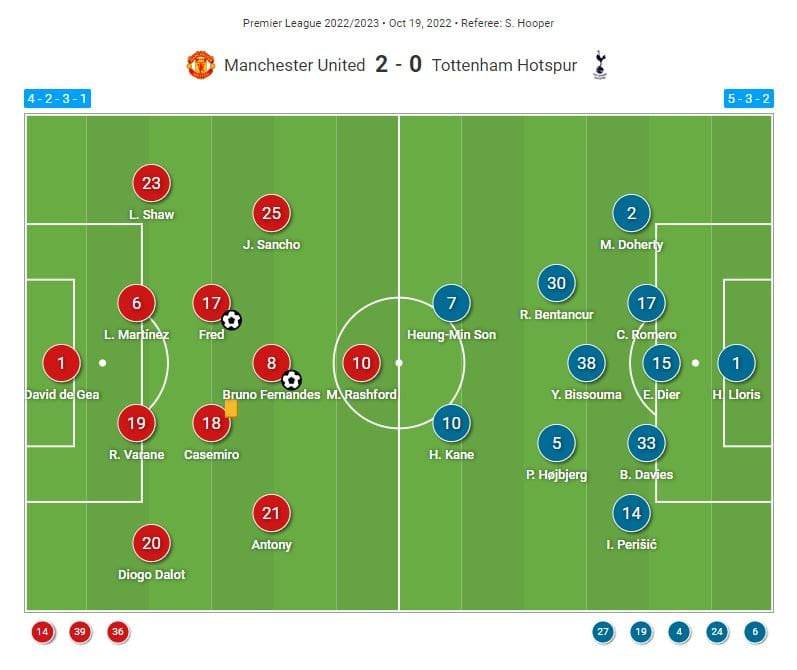
Ten Hag kept Cristiano Ronaldo out of the starting eleven once again. A decision that was close to overshadowing their strong performance as the drama between the manager and the striker continues. That was the only change the ex-Ajax boss made in the squad compared to their goalless draw to Newcastle.
David de Gea covered the goal, with a four-man defensive line of Luke Shaw, Lisandro Martínez, Raphaël Varane and Diogo Dalot in front of him. All defenders played a crucial part in the team’s success as their awareness and measured interventions stopped the opposition from creating dangerous chances.
The midfield consisted of Fred and Casemiro, with Fred being the main figure out of possession, recovering the ball and pressing the opposition successfully. Bruno Fernandes strolled in front of them, having the huge responsibility to threaten Spurs’ goal and increase the team’s creativity in attack.
Jadon Sancho and Antony supported Marcus Rashford from the flanks.
Conte relied on Hugo Lloris as the goalkeeper and Ben Davies, Eric Dier and Cristian Romero in a back-three. Ivan Perišić and Matt Doherty played as the wing-backs but had to spend a lot of time supporting their teammates in defence.
Pierre-Emile Højbjerg, Yves Bissouma and Rodrigo Bentancur formed Tottenham’s midfield but failed to counteract United’s movement both in and out of possession. Heung-min Son and Harry Kane were responsible for penetrating the defence but struggled in 1vs1 situations which kept them away from the goal.
United’s measured pressing actions
Ten Hag was known for his pressing strategy at Ajax and it looks like he is trying to transfer it to Manchester United as well. While he needs to adjust to the available players’ strengths and their pressing is not as aggressive, they achieved a great result through their well-measured actions against Tottenham. As their PPDA rate of 15 indicates, they were quite relaxed when it comes to diving into direct challenges to steal the ball from the opposition and trouble their build-up. Instead, they adjusted to the opposition’s low block and try to stay in a more advanced position as a unit.
This allowed them to be more cautious of their positioning and use it as a weapon for ball recovery, especially in advanced areas. They put a lot of their pressing efforts between the edge of the final third and the central line, so they have an advantage if they gain back possession.
Two players, in particular, played a crucial part in their successful pressing, with them both not only trying to retain possession but also to create chances out of it. Fred and Fernandes ended up with 12 and 11 recoveries in the game respectively and their counter-pressing involvement helped the team a lot. They were always on the front foot and tried to recover the ball within five seconds after possession loss, which helped them have more of the ball and avoid dangerous counterattacks, which Spurs usually succeed in.
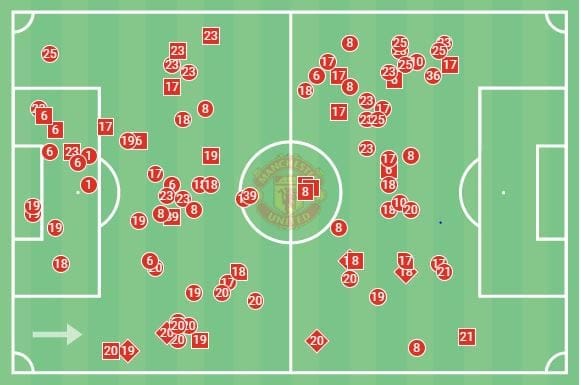
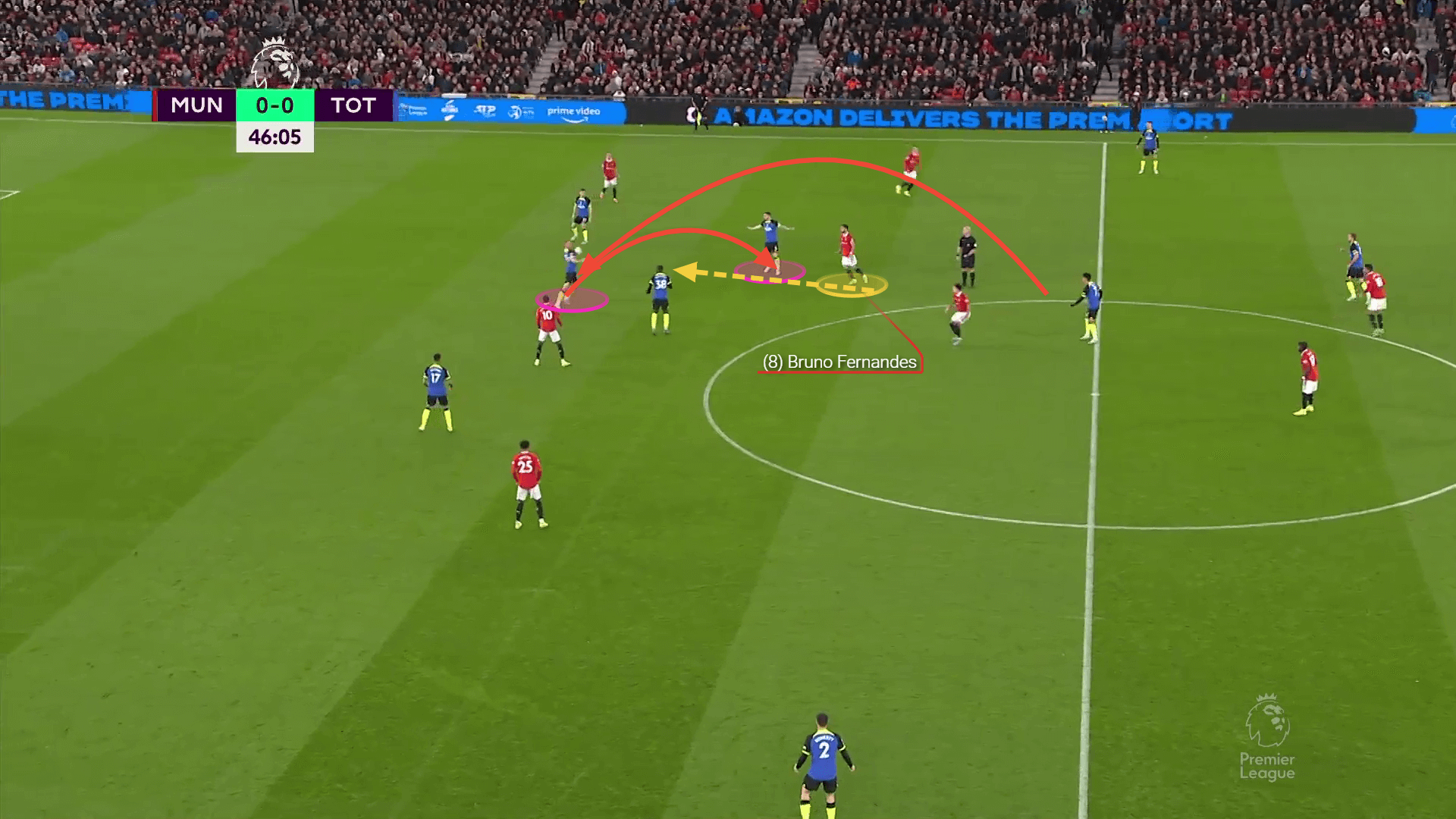
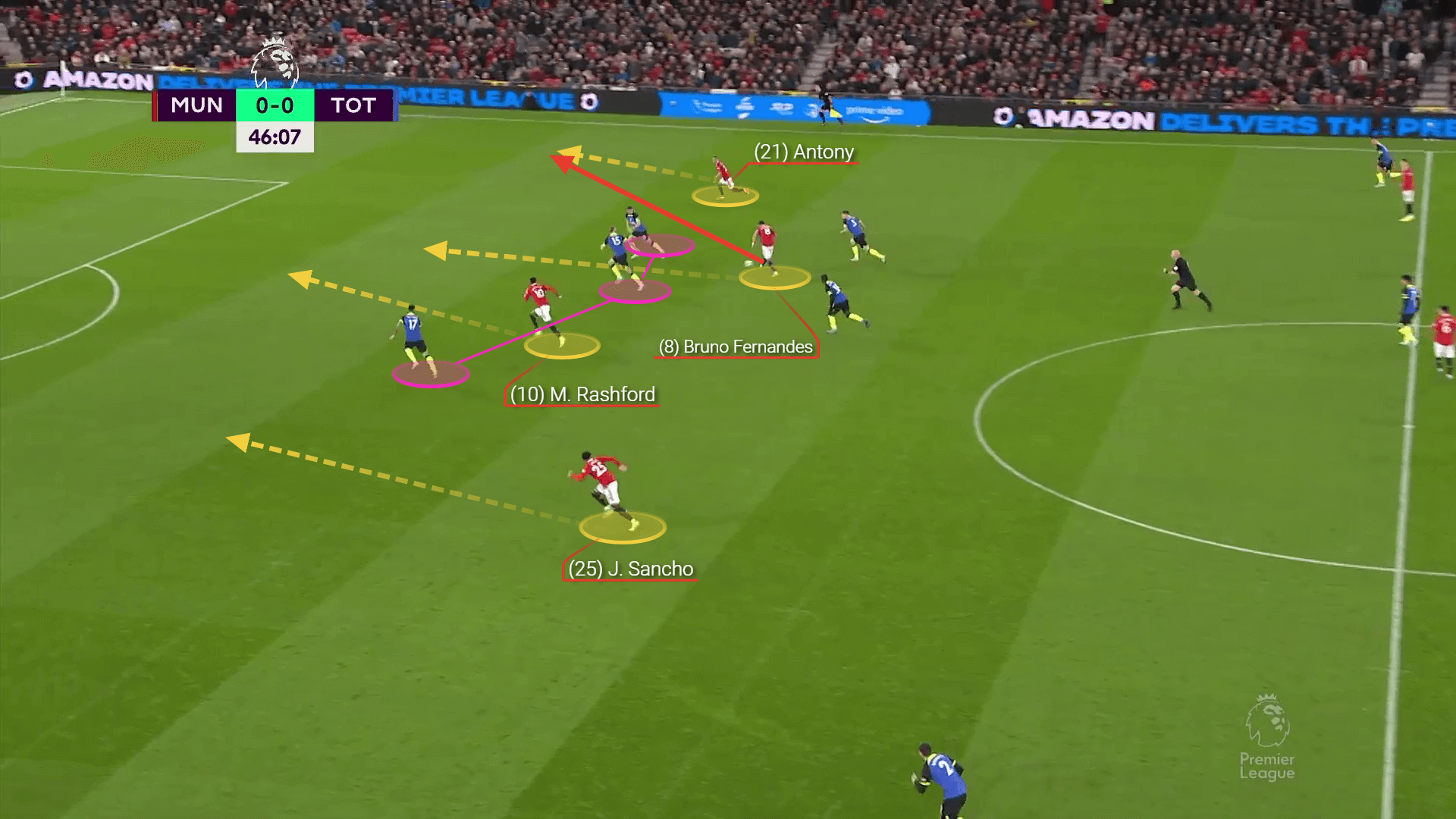
Tottenham’s defensive block
As mentioned, Spurs looked considerably passive throughout the game, concentrating on their low block, and minimising the spaces between the lines that United could exploit. Their strategy was partly successful in terms of forcing the opposition to seek different ways to break through the defence, which resulted in more than half of their 27 shots being outside of the box.
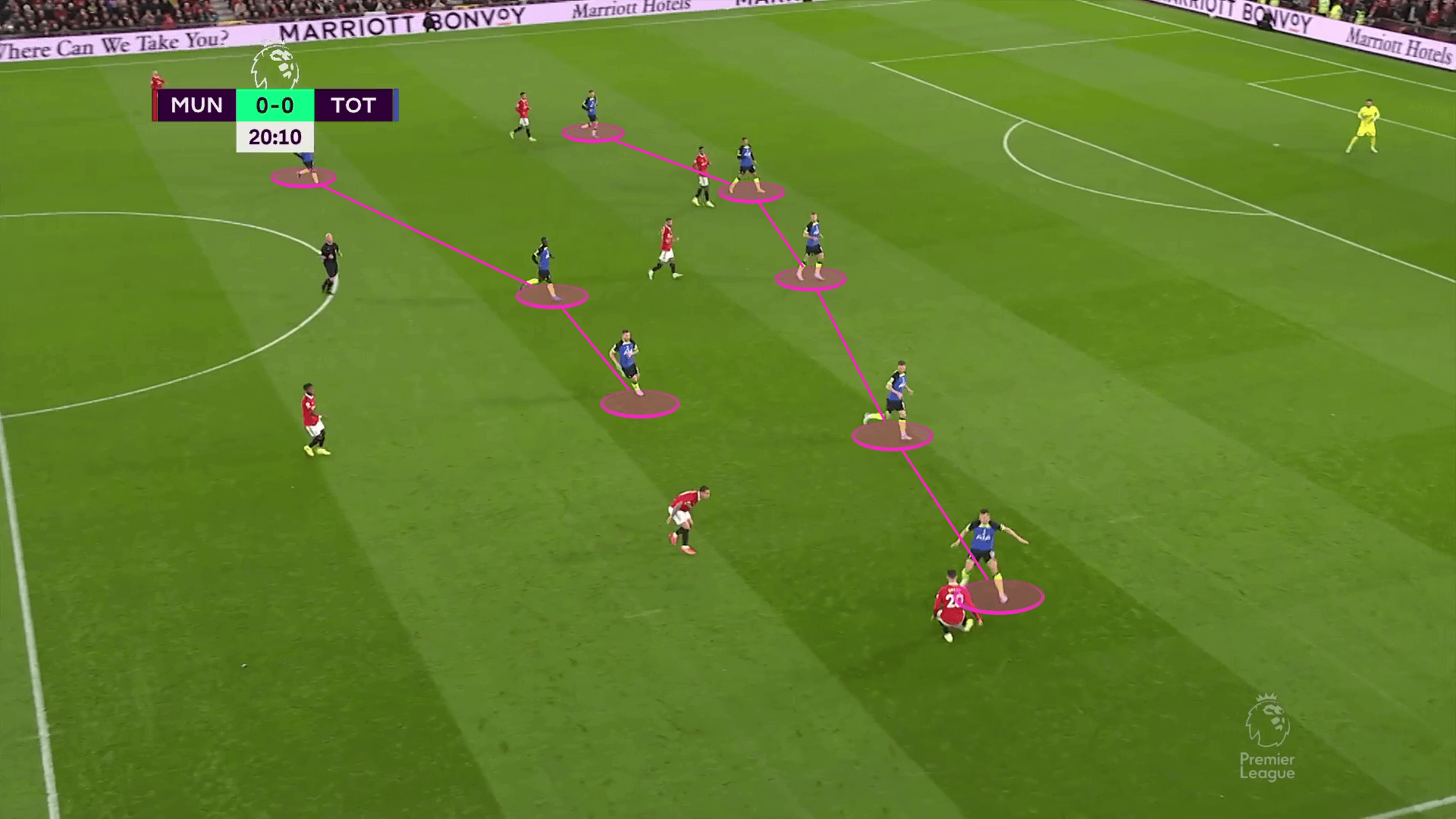
However, their passive behaviour and inability to beat the press resulted in getting stuck in midfield and failing in creating chances. Son and Kane were isolated for a big portion of the game, as the ball was circulating between the defenders and the midfielders, who were trying to open the passing lanes. Their plan didn’t succeed due to United’s players’ high level of concentration and anticipation skills, which allowed them to position smartly and trouble Tottenham’s build-up.
Conte’s side were forced to use a lot of lateral passing, which helped them balance out the possession percentile but didn’t result in any dangerous attacks. They involved the keeper on multiple occasions with him trying to support them with long balls directly to the opposition half. However, they still weren’t able to dis-position the opposition’s defenders.
Staying at the back comes with many risks. The team were prone to losing the ball in their own half, which as mentioned was United’s main goal. Spurs would lose possession frequently, but more significantly they were forced into individual errors, which resulted in conceding dangerous chances. A whole 15 of Tottenham’s losses led to an opposition shot.
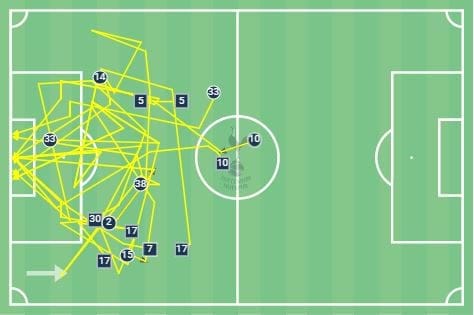
Red Devils’ intensity in possession
As a result of Spurs’ game plan, the Red Devils were able to dominate in possession and create many attacking opportunities. We have rarely seen United this active in terms of looking for gaps and trying to penetrate the defence and it only showed the ten Hag effect in action. Despite lacking an in-form goalscorer who can easily give them an advantage in front of the goal, they worked as a unit and tried to use the players to their potential.
This resulted in the whole team being involved in the attacking actions, instead of having the weight of the responsibility on one of them. However, again, Fred and Fernandes were the players who constantly tried to convert their chances into goals, although they surprisingly received a lot of support from Dalot who constantly moved to the opposition’s half and dominated on the right.
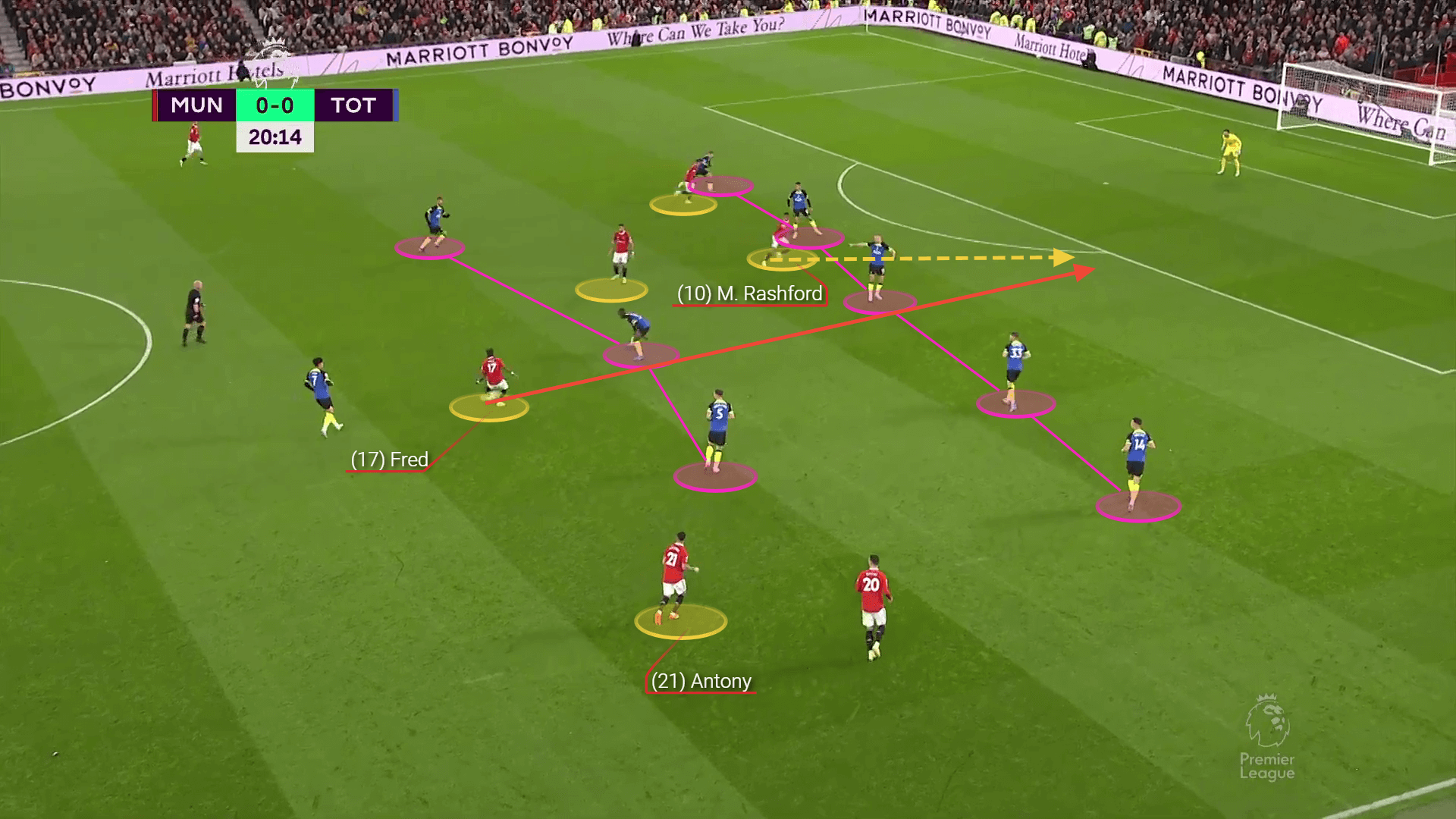
He was often the reason for the team’s successful build-up as he initiated a switch of play rather frequently, allowing them to release pressure and progress the ball. This focused their ball progression on the left and gave him the freedom to take on dangerous positions and threaten the goal.
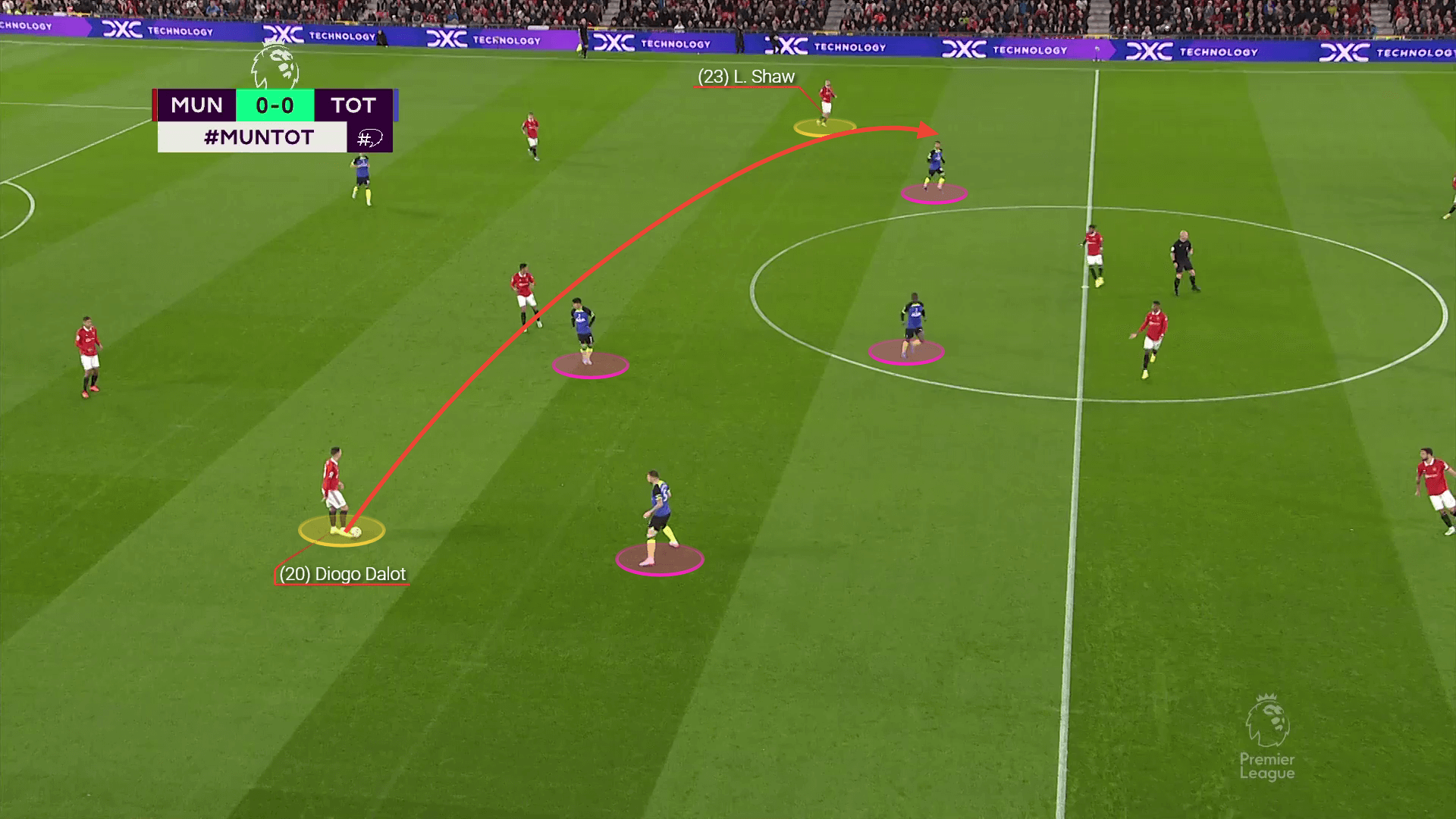
Conclusion
As our analysis showed, United’s mature performance was the reason for their win over Spurs. The manager expressed that he is pleased with the display and the team have executed each of their tasks well. Even Conte admitted that the opposition’s determination and performance deserved the win.






Comments